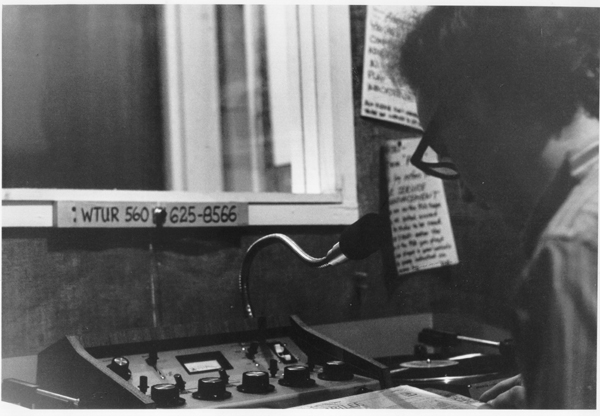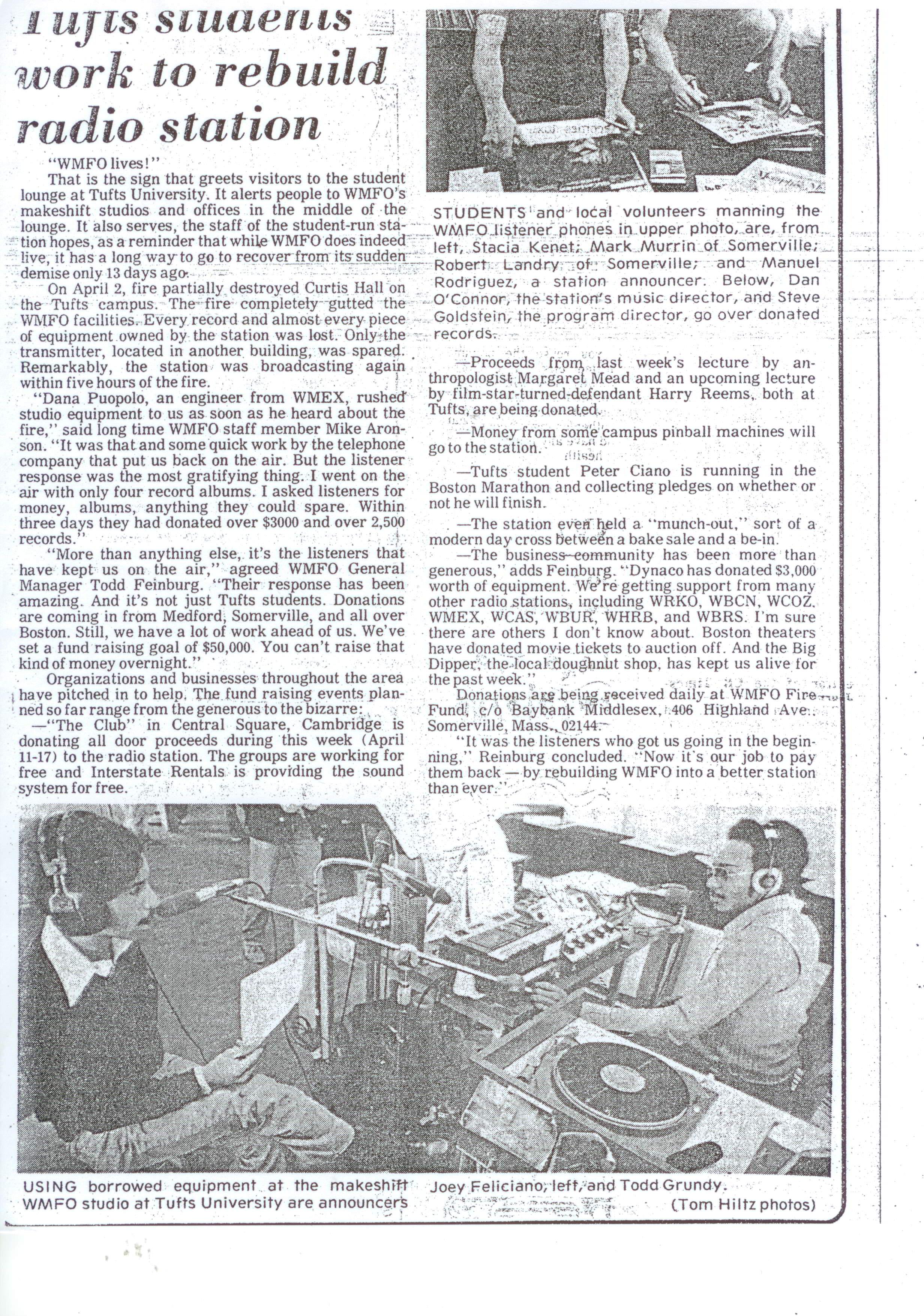Beginning broadcasts in January of 1970, WMFO sought to become a premier freeform, noncommercial, and publicly beneficial radio station. Continuing this tradition, 40 years of primary sources, manuals, photographs, flyers, tapes, and countless other pieces of media are stored at the station. The effort of the Office of Archives is to catalogue, digitize, and share this collection with the world at large. The Station History section houses the Former Executive Board, Former Shows, and Promotional Materials.
WMFO's earlies iteration came as WTCR (Tufts Community Radio), an amateur radio station between 1956 and 1961. After becoming a campus-sponsored organization, WTCR operated out of Braker Hall. The station broadcast on AM bands, reaching the campus proper at peak power.1
Despite the efforts of the staff, WTCR's dependance on dated military equipment led to the station's shutdown. After various radiation leaks were detected by FCC inspectors, the station was forced to disband. Station programming dwindled until 1961, when the group officially split.
The fall of WTCR left a body of funds that, until 1967, were left unused. In 1967, a group of students again formed a radio club, this time operating from Curtis Hall. The station, rebranded WTUR (Tufts University Radio), also broadcasted on the AM band, but with better equipment. In 1969, with the help of an $8000 university grant, WTUR moved to 88.3 FM. It is in this period that the "freeform" nature of WTUR became apparent, with shows ranging from talk to jazz.1
DJ at WTUR Studios, ca 19682.
In 1970, students in WTUR's membership planned a prank involving the local MBTA commuter rail connections. By utilizing the rails as a massive ground antenna, WTUR was able to broadcast as far as Quincy, Massachusetts and Nashua, New Hampshire. Though effective, the prank violated FCC rules and WTUR's alloted signal range. As a result, WTUR's license was revoked and the group was disbanded by university officials.
Soon after the dismissal of WTUR's broadcasting license, interest was renewed in creating a campus-run radio station. On February 6th, 1971, WMFO took over operations of the Curtis Hall studios, serving as an AM version of WTUR, playing "Here Comes the Sun" by the Beatles. In late 1971, WMFO was granted a 10 watt FM license, taking over 91.5 FM. This time, the station received its mandate as an education, community outreach station, requiring it to broadcast national news and services.
In 1974, WMFO expanded to 24 hour programming, fully developing its freeform nature. Station operations continued to grow until April 2, 1977, when a major fire destroyed most of the Curtis Hall studios. Despite suffering $100,000 in damages and the loss of most of its vinyl collection, WMFO resumed operations six hours after the fire. By the fall, the studio was renovated, allowing WMFO to continue broadcasting, with equipment upgrades arriving in 1978. In January 1982, the FCC approved WMFO's request to operate at 125 watts, after support from the university and community.
1. ↑ Tufts Digital Library - http://dl.tufts.edu/view_text.jsp?pi...chapter=W00022
2. ↑ Tufts Digital Library - http://hdl.handle.net/10427/778





